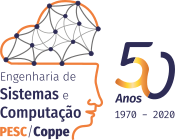Metodologia Computacional para o Estudo de Grupos Estelares em Movimento
Autores
|
6800 |
Josina Oliveira do Nascimento
|
163,522
|
|
6801 |
163,522
|
Informações:
Publicações do PESC
O estudo de grupos estelares em movimento está proximamente ligado ao estudo da formação estelar e à determinação da idade de estrelas, bem como ao da origem e evolução de sistemas planetários extrassolares. A missão Hipparcos (1989 a 1993) realizou medidas astrométricas de alta qualidade e forneceu catálogos contendo posições, paralaxes e movimentos próprios de alta precisão. Com a adição de velocidades radiais obtidas por outros meios, isso tornou possível a simulação retrógrada da evolução de grupos contendo algumas dezenas de estrelas a fim de determinar se constituem ou não grupos em movimento, bem como seus locais de origem e suas idades. Esta tese apresenta uma nova metodologia computacional voltada a analisar milhares de estrelas concomitantemente com o objetivo de refinar o entendimento atual quanto à composição de grupos já conhecidos, acrescentando a eles novas estrelas ou retirando estrelas que neles se encontrem. O cerne da metodologia consiste em representar os milhares de estrelas sendo consideradas através das componentes principais dos dados que as descrevem (velocidades, magnitudes, tipos espectrais, etc.). Da análise dessa representação surgem estrelas candidatas a inclusão em determinado grupo ou a exclusão dele, as quais são então submetidas a sucessivas simulações retrógradas para confirmação. Como estudo de caso, a metodologia foi aplicada ao grupo estelar em movimento Beta Pictoris, o que resultou em propostas de alteração do entendimento atual sobre ele.
The study of stellar moving groups is closely tied to the study of stellar formation and the determination of stellar age, as well as to the study of the origin and evolution of extrasolar planetary systems. The Hipparcos mission (1989 to 1993) performed high-quality astrometric measurements and resulted in catalogs comprising high-precision stellar positions, parallaxes, and proper motions. With the addition of radial velocities obtained by other means, this made possible the retrograde simulation of the evolution of groups comprising a few tens of stars, aiming to establish whether or not they constitute moving groups as well as where and when they originated. This thesis presents a new computational methodology tailored to the concomitant analysis of thousands of stars, aiming to refine the field's current understanding of already known groups by enlarging them with the addition of new stars or by removing stars from them. The core of this methodology is the representation of such thousands of stars by the principal components of the data describing them (velocities, magnitudes, spectral types, etc.). Analyzing the resulting representation gives rise to candidate stars that are then subjected to a succession of retrograde simulations for confirmation. As a case study, the methodology was applied to the Beta Pictoris Moving Group , which resulted in proposals to change the current understanding of it.




